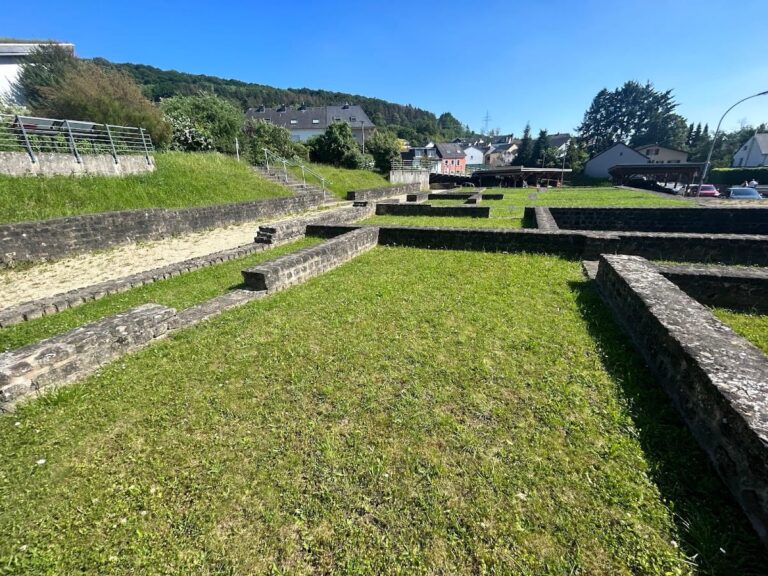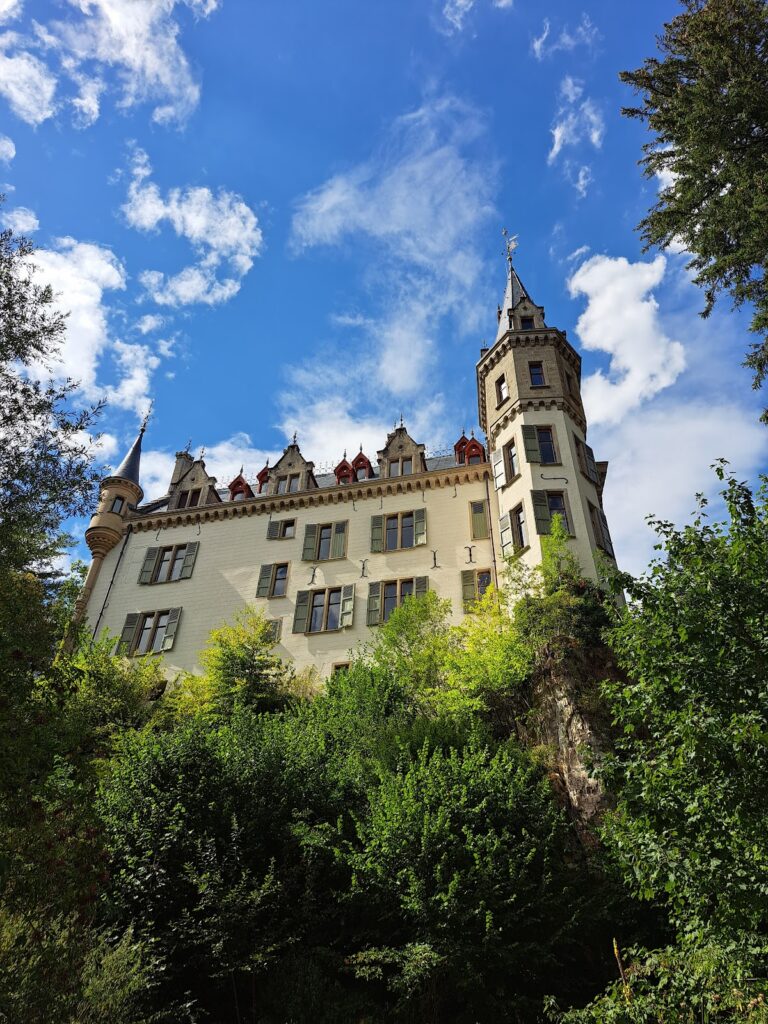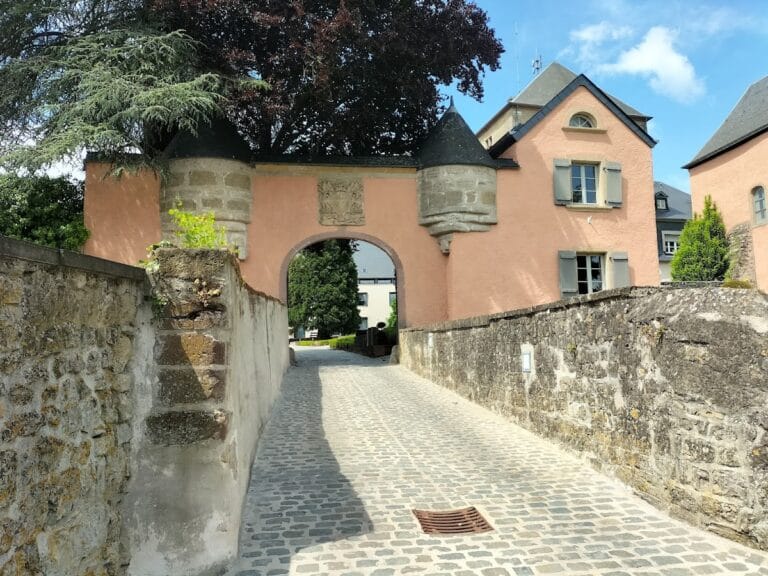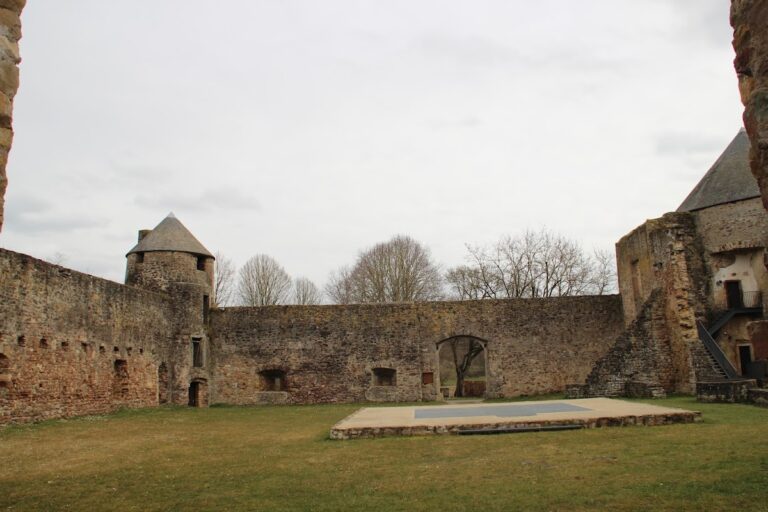Bourglinster Castle: A Historic Fortress in Central Luxembourg
Visitor Information
Google Rating: 4.5
Popularity: Low
Google Maps: View on Google Maps
Official Website: chateaubourglinster.lu
Country: Luxembourg
Civilization: Medieval European
Remains: Military
History
Bourglinster Castle is located in the village of Bourglinster, central Luxembourg, about 17 kilometers east of Luxembourg City. Its earliest recorded mention dates back to 1098, when it belonged to the religious institution of St Symeon of Trier. The initial complex included a residential keep, a chapel, and a surrounding defensive wall, marking the site as a fortified residence during the medieval period.
In the 12th century, the castle saw the construction of its oldest surviving elements, including the residential tower, a Romanesque-style chapel, and a curtain wall that enclosed the upper castle. Around 1350, the chapel was rebuilt in the Gothic style, reflecting architectural trends of the time, and a defensive tower known as a bergfried was added on the northern side to strengthen the castle’s fortifications.
Between the late 14th and early 15th centuries, the castle expanded with the addition of the lower castle, or basse cour, located north of the main building. This area included the Waldeck house, fortified walls, and two defensive towers, enhancing the castle’s defensive capabilities and residential space.
Ownership of Bourglinster Castle passed through several noble families over the centuries. Notably, from the 16th to the 18th century, the von Metzenhausen family held the castle as a fief. Their authority included judicial rights granted by Emperor Charles V, indicating the castle’s role in local governance and law.
The castle endured damage during the wars between Charles V and Francis I from 1542 to 1544. Following this, it was rebuilt in Renaissance style in 1548, which included the addition of a new southern wing. Later, between 1682 and 1684, French military actions led by Marshal de Boufflers caused further damage, particularly to the lower castle.
In the 18th century, the castle underwent Baroque modifications. Between 1730 and 1750, the Mungenast brothers added a Baroque façade at the far end of the courtyard, updating the castle’s appearance to contemporary tastes. Over time, the castle changed hands multiple times and was converted into a farmhouse from the 18th century until the mid-20th century.
The Luxembourg State acquired Bourglinster Castle in 1968 and carried out extensive restoration work, completed by 1988. The castle was officially listed as a national monument on 21 October 1982. Since then, it has served as a venue for cultural events, exhibitions, concerts, and meetings, supported by the association “Frìnn vum Bierger Schlass” (Friends of Bourglinster Castle).
Remains
Bourglinster Castle is situated on a low rocky hill and consists of an upper and a lower castle. The upper castle includes the original residential keep and chapel, while the lower castle, built in the 15th century, lies to the north and features a moat and two defensive towers.
The chapel, initially Romanesque, was rebuilt in Gothic style around 1350. At the same time, a bergfried, a tall defensive tower, was added on the northern side to enhance protection. The lower castle’s 13th-century northern enceinte (defensive wall) and entrance gate have mostly vanished, with only one gate remaining today.
The Renaissance wing, constructed in 1548, extends along the southern side of the castle courtyard. The Baroque façade, added between 1730 and 1750 by the Mungenast brothers, stands at the far end of the courtyard, marking the main building’s updated appearance.
Between 1850 and 1968, the main building served as a farmhouse residence before restoration. Today, the castle contains three banqueting halls, including the Salle des chevaliers (knight’s hall), which hosts chamber music performances. The former stables have been converted into an arts center managed by an artists’ collective, and a barn has been transformed into a used bookstore called the Pabeierscheier (Paper Barn).
Following the restoration completed in 1988, the castle is well preserved. No specific archaeological finds such as inscriptions, mosaics, or decorative details have been documented beyond the structural elements described.










